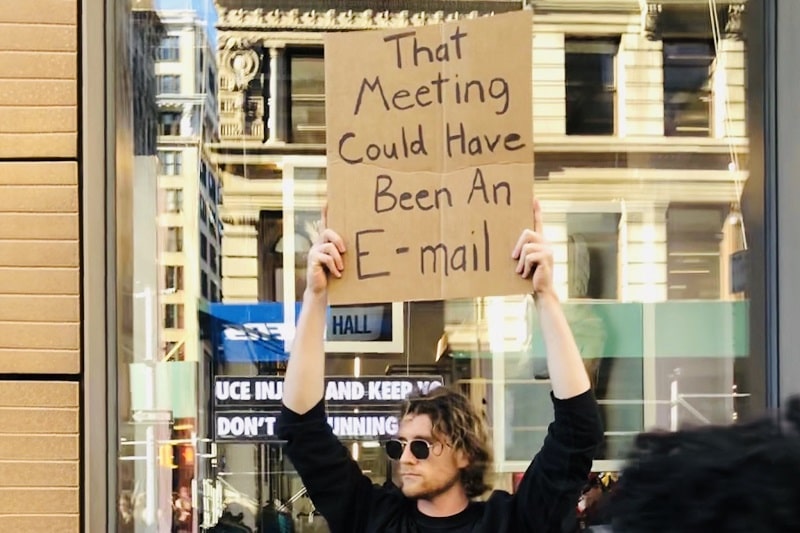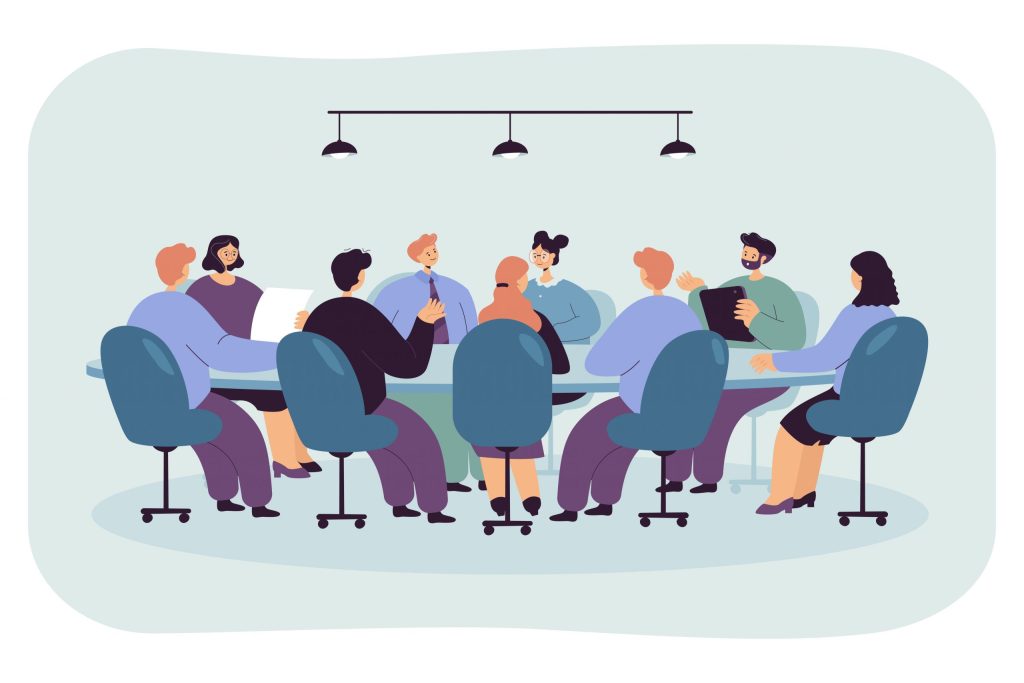The argument for fewer meetings is compelling. Although meetings are intended to foster teamwork, boost productivity, and encourage collaboration, the reality often presents a different picture.
Recent findings bring to light a stark reality: rather than promoting efficiency and team spirit, poorly organized and executed meetings can hinder progress, stifle creativity, and create unnecessary barriers within teams. It is high time we reevaluate our approach to meetings, trim the unnecessary ones, and avoid gatherings that could have been effectively conveyed through a simple email.
The Drain of Time
A striking Harvard Business Review study reveals that a staggering 65% of managers consistently find themselves held back from accomplishing their individual tasks due to endless meetings. The respondents acknowledged the burden of time wasted and the inability to fulfill their primary job responsibilities.
“Unproductive and Inefficient”
No one intends to lead unproductive meetings, yet a substantial 71% of respondents have labeled them as precisely that – unproductive and inefficient. Valuable time that could have been utilized for creativity, innovation, and problem-solving gets lost.
Inhibiting Problem-Solving
The survey unearthed that 64% of managers believe meetings come at the cost of deep contemplation. In our pursuit of constant collaboration, we may unintentionally be impeding the focused, solitary thinking required for intricate problem-solving and strategic planning.
Team Cohesion at Risk
Arguably the most concerning aspect is that 62% of managers feel meetings fail to bring their teams closer together. When meetings fall short of fostering team cohesion, their primary purpose needs reevaluation and refinement.
Evading the Infamous “This Meeting Could Have Been an Email” Phenomenon

While meetings have their merits for collaboration, they are not always the best means to achieve objectives. In fact, information shared during meetings can often be communicated more efficiently through emails or messages on platforms like Slack or Microsoft Teams.
By judiciously selecting between meetings and emails based on the circumstances, we can save time, reduce stress, and boost overall productivity. The aim is not to eliminate meetings entirely but to know when to opt for the traditional face-to-face approach and when to resort to digital communication.
1. When Information Isn’t Collaborative
If the information you are delivering does not require immediate feedback, opting for an email is often the wiser choice. Updates on projects, new policies, or performance reports can be quickly perused at the recipients’ convenience, saving everyone time.
Remember: A meeting can always be scheduled for future collaborative discussions.
2. When Immediate Interaction Isn’t Necessary
Unlike meetings that demand everyone’s simultaneous presence, emails provide the flexibility for recipients to respond at their convenience according to their workload and schedule.
3. Short and Sweet Messages
For straightforward messages that can be communicated in a few sentences, such as reminding your team of a deadline or confirming a minor change in plans, a quick email or message will suffice instead of convening a full staff meeting.
4. Logistical Details
For tasks like determining event dates or selecting a location, group emails or polls are more efficient than gathering everyone for a meeting.
5. Dealing with Multiple Time Zones
Coordinating a meeting with attendees in various time zones can be cumbersome. If real-time engagement is not necessary, an email can spare everyone the inconvenience of odd-hour participation.
6. Documenting or Tracking Progress
Emails offer the advantage of creating records of communication for future reference and accountability. Providing task instructions or tracking project milestones can be effectively done through emails, ensuring a traceable record.
Efficient and Productive Meetings

When executed effectively, meetings can be powerful tools for productivity, collaboration, and innovation. Here are some tips to ensure your meetings serve their purpose and don’t fall into the “this could have been an email” trap.
1. Plan and Share the Agenda in Advance
Before scheduling a meeting, create a clear and concise agenda, outlining the purpose and topics to be discussed. Share this agenda with participants well ahead of time to allow for adequate preparation.
2. Respect Time Constraints
Time is valuable, so start and end meetings on schedule. Keep them as brief as possible (around 30-45 minutes). For in-depth discussions, consider arranging separate meetings with relevant participants.
3. Invite Only Necessary Participants
Be selective with invitations. Avoid inviting people “just in case.” Only include those whose presence is essential for achieving the meeting’s objectives. Summarize or share the meeting minutes with others afterward.
4. Foster Participation
Encourage active participation by assigning roles or responsibilities to attendees. Whether it’s presenting an agenda item or taking minutes, involving everyone in the discussion improves the effectiveness of the meeting.
5. Minimize Distractions
Implement a “no phone or laptop” policy, except when they are essential for the meeting. This will keep everyone engaged and focused.
6. Follow Up
After the meeting, distribute a summary or minutes outlining the key points, decisions made, and next steps. Assign tasks with deadlines to ensure progress is maintained.
By implementing these strategies, you can optimize the value of meetings and avoid turning them into unproductive affairs.
Frequently Asked Questions

When Should I Use a Meeting Invite Instead of an Email?
Use a meeting invite when real-time collaboration, immediate feedback, or in-depth discussions are necessary and cannot be handled through written communication. For sensitive or complex topics requiring nuanced conversation, a meeting may be more appropriate.
How Do I Propose Turning a Meeting into an Email?
If you believe a meeting could be replaced with an email, consider using phrases like:
“I wonder if we could effectively address the points through an email instead.”
“Could we streamline this discussion via email?”
“Considering an upcoming deadline, I think we can cover this through email, freeing up time for other pressing tasks.”
When Are Meetings More Suitable Than Emails?
Meetings are better suited for real-time interaction, immediate feedback, clarification, and more complex decision-making discussions. They can also strengthen relationships through face-to-face interactions.
In Conclusion
Balancing the use of meetings and other communication methods is a crucial skill in the professional world. By being selective and purposeful with meeting invitations, you can reclaim your workday and enhance overall productivity. Let’s put an end to the question of whether a meeting could have been an email and make both forms of communication work in harmony.